As card manufacturers look toward a more sustainable and circular future, the conversation around material innovation is gaining urgency.

One polymer attracting growing attention is polylactic acid (PLA)—a biobased, recyclable and compostable material derived from renewable resources.
Recent work by TotalEnergies Corbion, a company specialized in bioplastics, highlights how its Luminy® PLA and Luminy® rPLA grades are advancing the environmental profile of plastics used across industries—including applications relevant to the card sector.
From Sugarcane to Sustainable Polymer
PLA is produced from annually renewable sugarcane, a crop that captures atmospheric carbon as it grows. Through fermentation, the sugar is converted into lactic acid, a naturally occurring molecule also found in the human body. The lactic acid is then polymerized to create PLA resin, a material with performance characteristics similar to conventional plastics but with a substantially lower carbon footprint.
Each kilogram of PLA typically requires 1.6 kg raw sugar and captures 1.83 kg CO₂. This efficiency underscores how renewable feedstocks can yield lower environmental impacts while meeting industrial performance standards.
PLA’s versatility is well established—it is used in durable goods, food service ware, flexible packaging and increasingly, bank, gift and loyalty cards. Advances in formulation and compounding continue to improve PLA’s durability, heat resistance and printability, which are key considerations for secure card applications.
Multiple Paths for End of Life
Because PLA is derived from plants, it offers more than one responsible end-of-life pathway. Depending on how a product is designed and used, it can be:
- Reused – in long-life or durable applications.
- Recycled – through mechanical or advanced chemical recycling, which breaks PLA back down into its lactic acid building blocks.
- Composted – under industrial conditions for items that may be contaminated with organic matter.
At industrial scale, this closed-loop system is already being demonstrated. TotalEnergies Corbion’s advanced recycling process depolymerizes post-consumer PLA waste into lactic acid, which is then repolymerized into new Luminy® rPLA—a resin with identical properties to virgin PLA. This circular approach shows that recycling PLA is not theoretical; it’s a functioning system that’s growing globally.
Quantifying Environmental Performance
To better understand the environmental implications of PLA production, TotalEnergies Corbion conducted a Life Cycle Assessment (LCA) compliant with ISO 14040-14044-14067 standards. The study examined both virgin PLA and recycled PLA produced at the company’s facility in Thailand.
Key findings include:
- A reduction of 200 kg CO₂-equivalent per ton of PLA compared to 2019 production levels.
- Carbon neutrality achieved at 30% recycled content.
- A negative carbon footprint achieved at 100% recycled PLA.
- Significant decreases in acidification, particulate matter and water consumption for rPLA compared to virgin PLA.
In total, Luminy® PLA offers up to an 85% reduction in carbon footprint compared with conventional fossil-based plastics.
Transparency in Carbon Accounting
Assessing the climate impact of biobased materials depends heavily on how carbon flows are measured. The ISO “–1/+1” biogenic carbon accounting approach, used in the Luminy® LCA, reflects the carbon captured by plants during growth and its eventual release at the product’s end of life.
This transparent method helps illustrate the temporary carbon storage benefit of biobased materials—a factor not captured under the European Product Environmental Footprint’s “0/0” method. Recognizing both perspectives provides clarity for manufacturers and brands reporting on their climate performance.
Results in Context
When compared with traditional polymers, the differences are striking:
| Material | Cradle-to-Gate Carbon Footprint (kg CO₂e/kg polymer) |
| PET | 3.0 |
| PP | 1.8 |
| PLA (including biogenic carbon) | 0.29 |
| 100% rPLA (including biogenic carbon) | –0.65 |
The Life Cycle Assessment also found that rPLA performed better than virgin PLA in most environmental categories—including reductions of 93% in land use and 52% in water consumption—demonstrating measurable progress toward more sustainable production.
Implications for the Card Industry
For card manufacturers and issuers seeking credible ways to reduce their environmental footprint, PLA-based solutions are worth serious consideration. The material’s technical properties can meet the requirements for card form factors while supporting broader sustainability objectives.
In addition to lower greenhouse gas emissions, PLA and rPLA offer:
- Reduced reliance on fossil-based inputs
- Compatibility with mechanical and chemical recycling
- Potential for carbon neutrality when recycled content is used
- A growing commercial infrastructure for circular recovery
These attributes align closely with the ICMA EcoLabel Standard Program, which recognizes sustainable materials and manufacturing practices across the card industry.
Moving Toward a Circular Card Economy
As global supply chains and end users demand greater accountability for environmental impact, material innovation remains a critical driver. The evolution of PLA and recycled PLA demonstrates how renewable chemistry and circular design principles can work together to deliver lower-impact cards without compromising quality, security or durability.
The findings from TotalEnergies Corbion’s research reinforce a central message: achieving sustainability in card manufacturing requires a shift not just in process efficiency, but in the materials themselves.
Why ICMA Membership Matters
As ICMA celebrates 35 years of leadership in 2025, the association remains steadfast in its mission to empower the global card manufacturing community. Through a blend of cutting-edge marketing support and robust professional development, ICMA equips its members with the tools they need to lead, innovate and grow.
ICMA’s professional development programs are designed to elevate technical knowledge and leadership skills. Programs like Advanced Card Education (ACE) and the Card Industry Training & Education (CITE) initiative help individuals deepen their expertise, while the EXPO and CardTREX bring together the brightest minds in the industry for learning, networking and innovation.
Members who engage in ICMA’s educational offerings and industry events don’t just keep pace with change—they help drive it. Whether contributing thought leadership to Card Manufacturing magazine or gaining recognition through programs like the Élan Awards of Excellence, ICMA provides members with meaningful opportunities to raise their profile and shape the future of the industry.
For card industry professionals looking to stay competitive and connected in 2025 and beyond, ICMA offers a clear path forward through education, visibility and community.
Discover the full value of ICMA membership and join a global network of professionals advancing the card industry.
